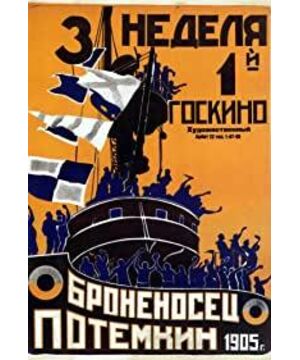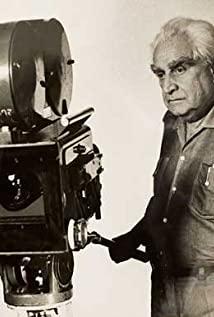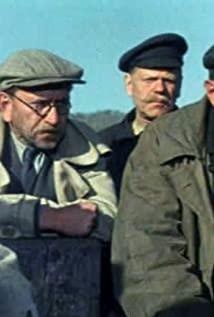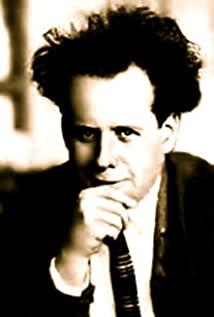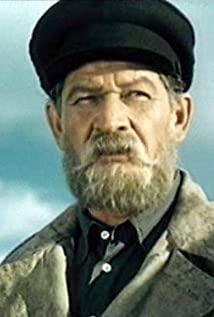People are used to labeling the 1925 film "one of the greatest films of all time," and the accolades attached to that label are countless. Until 2005, 80 years after the film's birth, "Battleship Potemkin" was still dazzling at the Berlin Film Festival, adding a lot to the golden bear of the year, and the lasting artistic appeal and influence of the film can be seen.
The film consists of five parts. -, "Man and Maggot", describing the hard life and inhuman treatment of the sailors on the battleship. The beef with roundworms angered the soldiers and became the trigger for the uprising. 2. "Tragedy on the rear deck", the sailors who showed the uprising were suppressed by the officers, the commander ordered to be shot, the priest came to pray, but the firing squad refused to shoot. The insurgents took up arms and threw the officers and medics into the sea, but the leader of the insurrection, Vakurinchuk, was wounded by the first officer and fell into the sea to die. 3. "Blood for blood", showing that the revolutionary masses in Odessa were filled with righteous indignation when they saw the body of Vakurinchuk, who was carried to the shore by motorboats, and supported the uprising sailors one after another. 4. "Odessa Stairs", the people of Odessa were suddenly suppressed by the tsarist army on the stairs, the people who fled everywhere were killed and injured, and the sailors on the battleship fired at the General Staff. Fifth, "combat preparation", the naval fleet is approaching from a distance, and the sailors are ready for battle. But the soldiers of the Tsar's naval fleet refused to fire on their brothers, and the battleship Potemkin flew to the sea with the red flag flying...
The director of the film is Sergei Eisenstein, one of the representatives of the Soviet montage school. He has high attainments in film creation and film theory, and is a milestone figure in film history. He himself said: "Sometimes I use the analysis to comment on the 'work', and sometimes the work is used to test this or that theoretical hypothesis. . He draws his theory vividly, and "Battleship Potemkin" is one of the outstanding masterpieces, and the film clearly shows his montage thinking. There are many definitions of montage. In a broad sense, montage is not only the specific skills and techniques of editing, but also a unique thinking of film art (later including television) reflecting real life. The film can achieve such a high artistic achievement precisely because the director systematized the montage and brought it into full play. In the film, the combination of shots and shots are logically closely matched, and on this basis they collide to generate ideas, achieving the effect of "not the sum of two numbers, but the product of two numbers". Take the fourth chapter of the film "Odessa Stairs" as an example. This clip is one of the most classic clips in film history. It can be said that the use of this clip montage has created Eisenstein's unique space-time system. This segment is 7 minutes long, with 155 shots, an average of 22 shots per minute, and each shot is less than 3 seconds long. “The reason why Eisenstein wanted to greatly extend the space and time of the Odessa stairs that existed in reality with only three to four groups was actually to achieve an extended rendering of emotions through high-editing footage.”① Among the several clues in this clip, the montage of the sentence "Mother and the Stroller" consists of 9 shots, including 4 panoramic shots and 5 close-up shots. The panorama shows the Tsarist Russian soldiers shooting to death, and the close-up shows the mother and the rolled baby carriage. The high-speed assembly of two extremely disparate scenes deeply expresses the warmth of human nature (mother and baby) and the animal nature of the state machine (soldiers mutilating women and children), and forms dramatic tension in this strong contrast, making the audience fully immersed in it , to achieve the purpose of promoting the theme of the film.
The starting point of Eisenstein's montage theory is "attraction montage", which refers to "whatever two shots are aligned together, they are bound to join together into a new quality that emerges from this alignment. A new appearance.” ② In short, it is to abandon the organic nature of the picture content and pursue a pure montage effect, but this extreme approach has proved unfeasible in practice. In the filming of "Battleship Potemkin" and later films, he revised this principle-abandoning the randomness of shot selection, emphasizing the reality of shot images and the unity of the overall series, and proposed "rational" "movie" concept, which is the essence of his rational montage thought. ③ For example, there are 3 very meaningful shots in the film, the pictures are "Sleeping Stone Lion", "Waking Stone Lion" and "Standing Stone Lion". The awakening and resistance of the oppressed people can be described as ingenious and original. This perfect fusion of picture content and montage deepens the film's thinking. The relationship between montage and the content of the lens is somewhat similar to the "shape" and "god" that are emphasized in ancient Chinese painting and calligraphy. If you only have to montage and abandon the content of the picture, there will be no "god" and lose its supporting carrier, which is ethereal and unpredictable; If only pictures are left without montage, then there will be only "shapes" piled up and lose their aura, which is empty and boring. Only with "both form and spirit" can we achieve "profound meaning".
A film like "Battleship Potemkin", which is famous in the history of the film, not only has pioneering and innovative performances in big areas, but also carefully crafted in small areas, striving for perfection. In the film, the military doctor's glasses appear twice. Once, the military doctor took off the glasses to observe the beef with maggots, and gave several close-ups of the glasses and the maggot meat. A close-up of "glasses floating on ropes" after a medic was thrown into the sea by angry soldiers. Through the small prop image of glasses, the hypocritical and bad face of the character of the military doctor is delicately portrayed, and its ending is extremely ironic. Another highlight of the film is the rising "red" flag, the first touch of color in the history of the film, which ignites revolutionary passion and elevates the theme of the film. This technique was adopted by another film master, Spielberg. The little girl in red in "Schindler's List" is obviously a tribute to Eisenstein!
Today, the love of "Romeo and Juliet" is still lingering; "Sunflower" still exudes its splendid insolence; the Sagrada Familia is still unique. Great works created by great artists are always enduring, and people of different times and cultures can always find resonance in them. It is a kind of vitality that transcends the years and becomes stronger over time. Obviously, "Battleship Potemkin" has this kind of power, and it is worth chewing and tasting again and again later!
View more about Battleship Potemkin reviews


